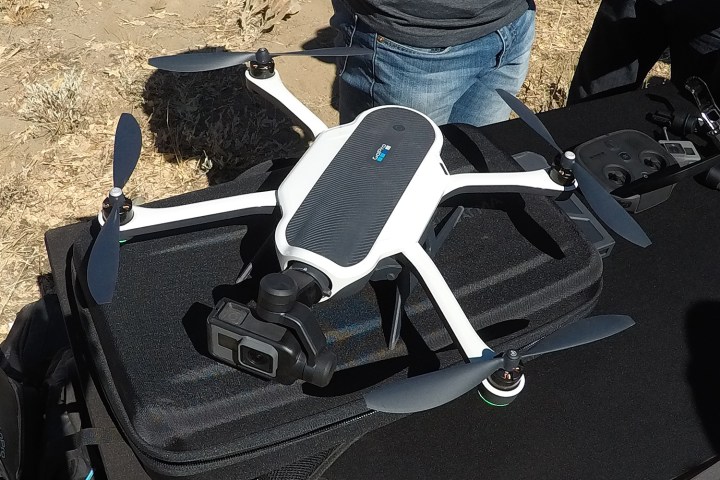
And before you say, “But how about that ‘drone show’ that kicked off Lady Gaga’s halftime gig?” Well, the dazzling aerial display was actually recorded a week earlier and slotted in on the night.
So by all accounts, everyone complied with the FAA’s request not to take their drones along to the big game.
But there are still those who just can’t resist grabbing their remotely controlled flying toy for some sky-based kicks — at a sports event.
Take Sunday’s baseball game between the Arizona Diamondbacks and the San Diego Padres at Petco Field. In the seventh inning, TV commentators spotted a GoPro Karma drone, with footage showing it buzzing about inside the venue.
“We have a drone that is flying in over the seats right now, it’s making its way behind the Diamondback dugout at third base,” the commentator said, quipping, “I’m pretty sure the Russians have something to do with this.”
Drone invades @Dbacks – @Padres game and makes a crash landing in the stands. pic.twitter.com/OaOcPTACLM
— FOX Sports Arizona (@FOXSPORTSAZ) May 21, 2017
But then the unidentified pilot loses control of the machine as it sails at speed into an empty seat among a group of spectators toward the back of the stadium. Luckily it didn’t score a direct hit on anyone, though you can see various parts — likely the Karma’s propellers — spinning off toward those close by.
While some reported drone accidents involve a machine dropping from the sky and landing on someone’s head, researchers are also learning more about the kind of damage that a flying drone — like the one in the footage above — can cause if it hits someone smack in the head.
Researchers at Virginia Tech suggest that features built into drones such as bumpers, enclosed rotors, and airbags could help reduce the risk of injury in the event of such collisions, though a little more common sense among a small number of drone owners would obviously go a long way to preventing accidents of this nature happening in the first place.


